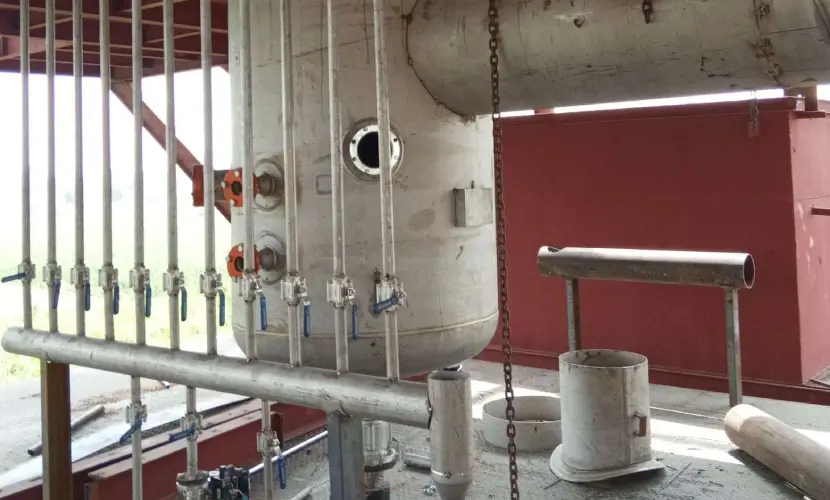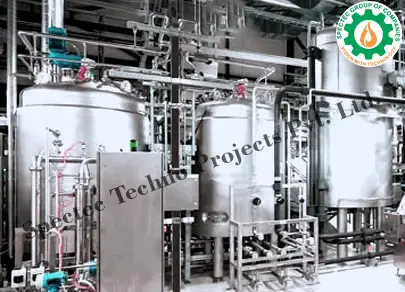- Home
- Other Projects
- Vanaspati Plants
Projects we offer
Vanaspati Ghee Plant Manufacturer Process
Vanspati is consistent blend of edible vegetable oil which are refined & Hydrogenated to produce pure cooking fat. It is produced through controlled hydrogenation of edible oil. The colour, texture and hardness resembles with natural ghee. It acts as an alternative to the traditional butter fat ghee. Vanaspati is semi solid in nature with a coarse granular structure and it usually requires to have a melting point of 37°C – 39° C. The desired granular texture can be improved by Interesterification.

Process Steps:
Hydrogenation
CPO/ Palm Stearin/Other soft oil from storage tanks is directly pumped to the Autoclave through Hydrogenated Fat Cooler, where the heat is exchanged. The Autoclave is specially design to heat and cool the oil during the reaction and is provided with catalyst dosing and sampling system.
The oil is fed to the Autoclave and oil is heated to the reaction temperature in presence of spent catalyst with vigorous mixing through the specially designed the combination of agitation system. After attaining the required temperature, the compressed Hydrogen is passed at very low pressure, required quantity of catalyst is dosed when the consumption of gas slows down.
The samples were drawn to check the progress of the reaction.
The Hydrogenated oil after completing the reaction is dropped into the cooler for further heat exchange and finally cooled with cold water.
The material is filtered in Leaf filters or C I Plate and Frame Traditional filters with cotton filter cloth to remove the Catalyst.
The filtered oil is then passed through the Polish filters to remove the traces if catalyst.
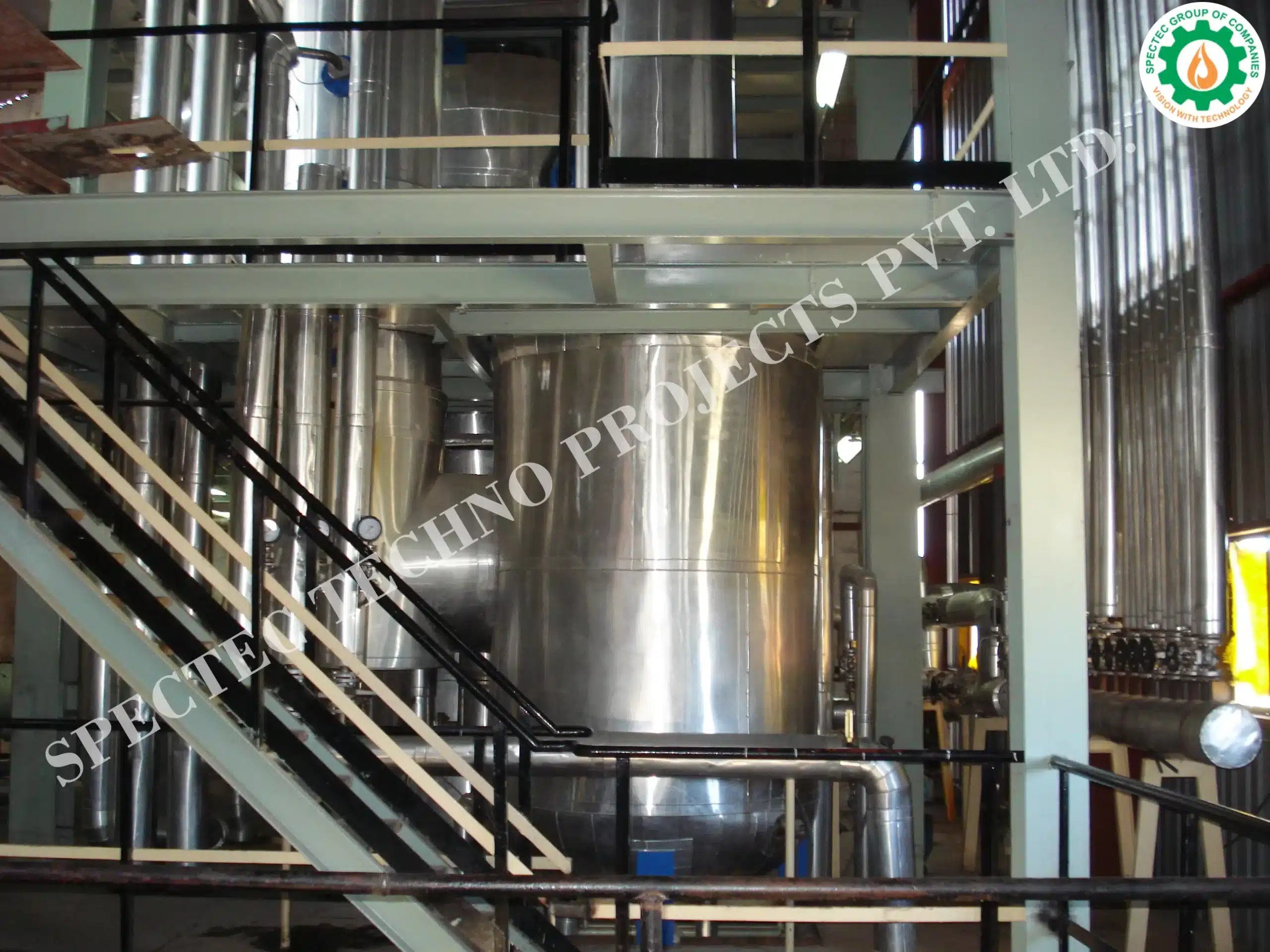
Interesterification
Inter esterification consists in modifying the physical properties of the oil by an interchange of fatty acids between and inside the different triglycerides, by mean of a catalyst. This is done by a catalyst operating at about 100°C and under vacuum. The blending of oils at elevated temperature to
interchange the fatty acid group.
Palm Stearin and soft oil from storage tanks is directly pumped to the Homogenizer, where both the oils are heated and mixed properly. The homogenized oil is pumped to the Reactors for the further processing. The oil is heated to the reaction temperature with vigorous stirring, the catalyst is dosed in the required quantity this is stirred continuously to propagate the reaction. The reaction takes approximately one to one and half hour and total cycle time is approx. 4 to 5 hours the Inter- esterified oil is then transferred to the cooler for cooling and to the intermediate storage tanks.
Neutralization
The hydrogenated oils is pumped to the neutralizers, from the intermediate tank. The oil is heated up to 60-70’C by means of the live steam provided in to the Neutralizer, the required amount of hot water wash, to allow the nickel particles to settle. After 2-3 hours, wash water is drained off in slope oil tank.
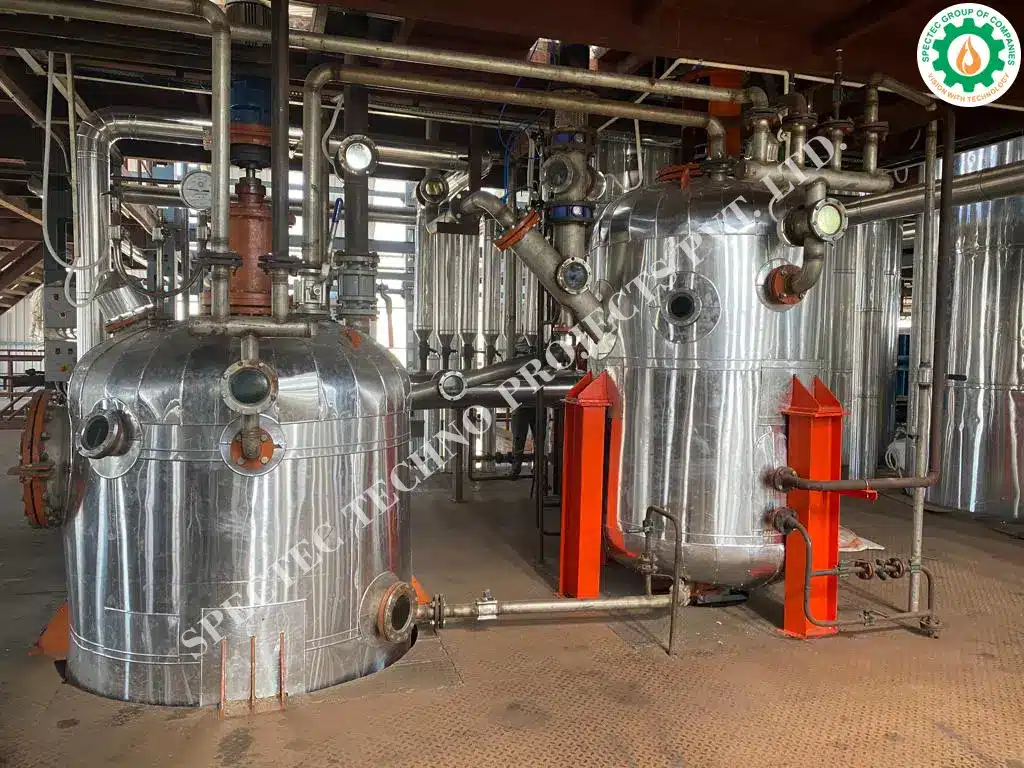
Post Bleaching
After Neutralization, the hydrogenated oil is pumped to the POST BLEACHER at the same time part of oil is carried to the SLURRY TANK oil is cooled before passing to slurry mixer. Pre-calculated amount of bleaching earth is added in the slurry mixer; this slurry is sucked by means of vacuum to the bleacher.
After proper holding & mixing this oil is sent to the alternative operating set of PRESSURE LEAF FILTER after this filtration oil is again filter by alternative operating set of polishing filters. Then it is cooled by shell and tube cooler.
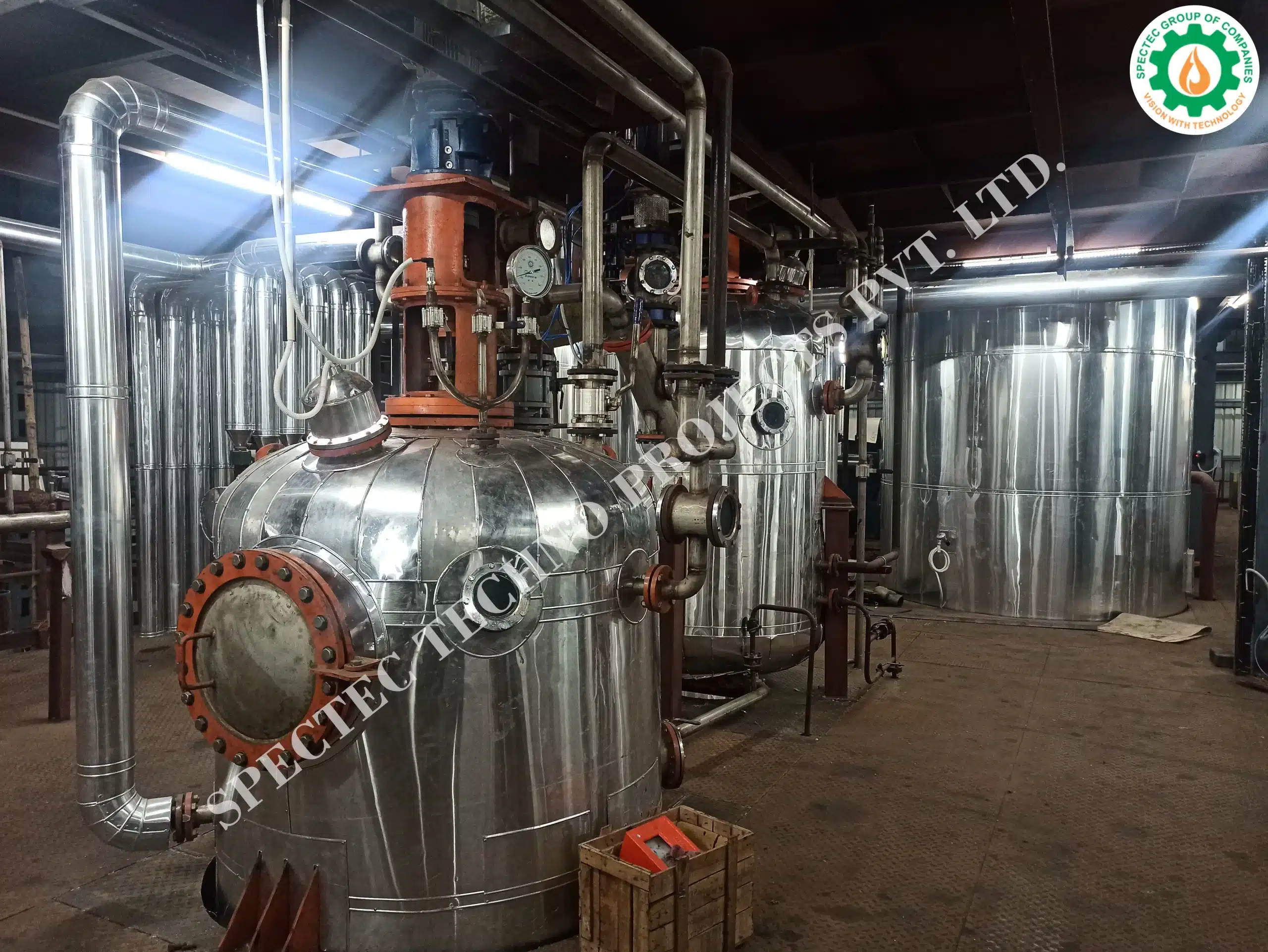
Deodorization
Deodorizing is nothing but The Distillation process. In which fatty acid is distilled from oil. Under high temperature condition and in presence of high vacuum, with the help of sparging & agitation steam. Further this fatty acid in vapors form is condensed & recovered in liquid form by the vapors s crubbing system. Bleached oil from intermediate storage tank is pumped by to oil to oil heat exchanger. Where bleached oil is heated by the outgoing hot refined oil. Then this oil is going to The Pre-Heator via. Peripheral coils of the regenerative heat exchanger which is the bottom compartment of the multipurpose deodorizer. In regenerative heat exchanger, de-waxed oil flows through the coils & refined oil flows through the open space of the exchanger. In counter, current manner, continuous steam agitation at open steam side assures continuous and maximum heat exchange.
After recovering maximum heat from the refined oil. Oil is further heated up to the required temperature, suitable for the deodorizing in final heater. This heater is equipped with agitation and sparging steam, continuous flow of superheated steam through this assures effective primary vaporization of fatty acid.
Further this overflows to the multi-compartment Deodorizer. Deodorizer is multi-compartment vertical vessel, where each tray is specially designed which Ensures uniform distillation of odoriferous substances. Oil is overflows from tray to tray. Specially designed trays provide sufficient mass transfer surface for effective removal of volatile matters. Flow control system at the outlet of the deodorizer, ensures the maintenance of required level at the bottom tray. The steam used for stripping off volatile matters in the oil is distributed evenly and intensively. The steam meets the deodorized oil, and strip off the volatile matter and rises through the vacuum, stripping the volatile matter from the oil. The counter-current flow of steam and oil like this in specially designed trays lower steam consumption than the conventional deodorizers. The deodorized oil leaving regenerative heat exchanger and finally cooled by water in heat exchanger finally this oil is passed through the alternatively operating set of polishing filters.
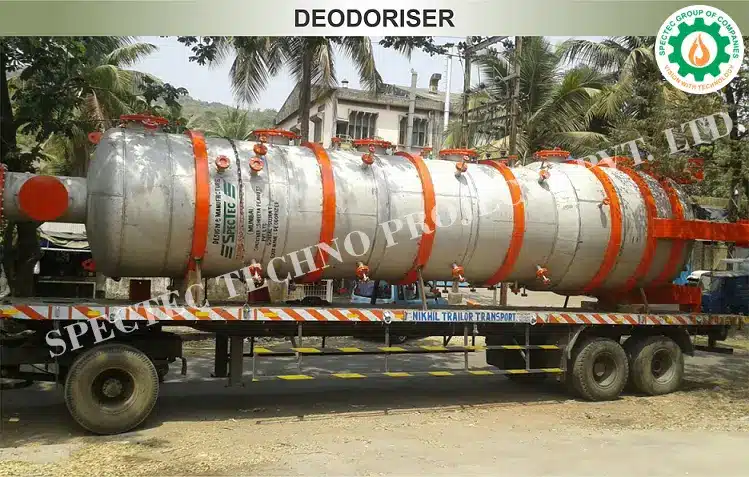
Vapors Scrubbing
The volatile matters consisting of free fatty acid and other odoriferous substances stripped from the deodorizer are led to the vapor scrubber located at the outside of the deodorizing column. In the scrubber, volatile material rises through the bed of pall rings and meets liquid fatty acid sprayed from the top. Vapors are condensed, cooled, and then recalculated to condensed fresh vapors. Excess distillate collected is led to the storage tank, whenever high level reached in storage space below the scrubber.
Fatty acid scrubber is specially designed for minimum carryover of fatty materials, to the vacuum system.
